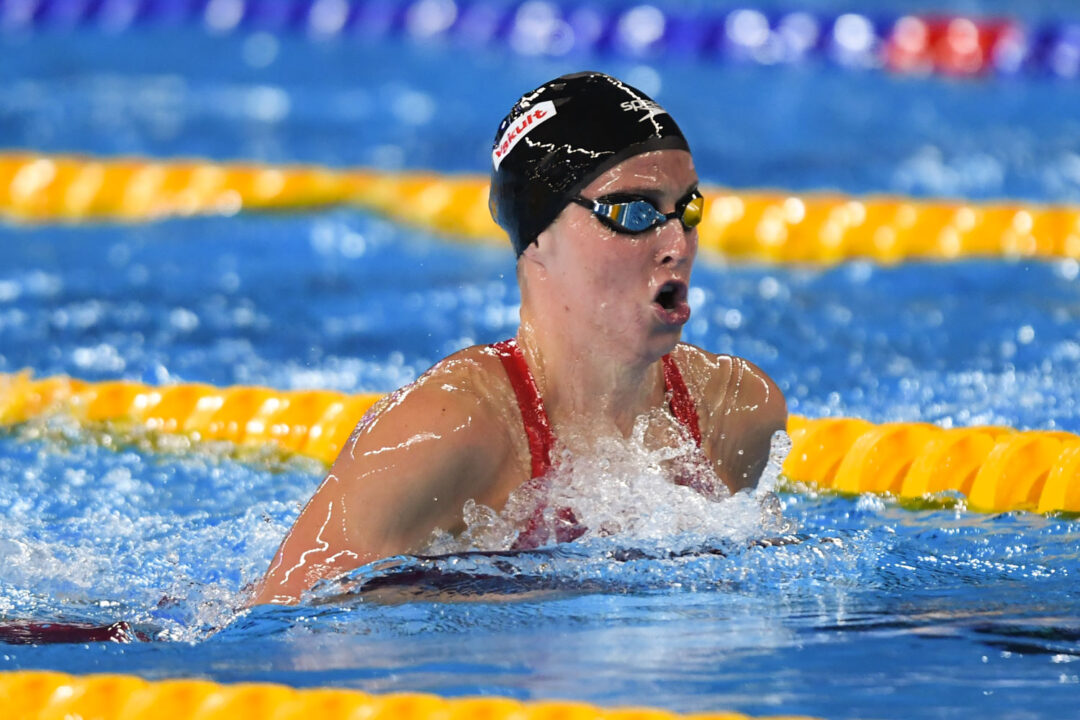When Canadian swimmer Sydney Pickrem shattered her personal best in the 200 IM to qualify for the Olympic Team for the Paris 2024 Games, we noticed an unusual phenomenon: the split of the breaststroke leg of her race was responsible for her improvement, seemingly without her breaststroke actually improving.
Jason Calanog, one of the coaches who she has been training under as a pro at Texas A&M University, explained this paradox in a post on X (formerly known as Twitter).
Ppl have asked me on what has helped Syd improve in her 200 IM? Her 3 coaches have worked on her strokes and 🆙 her 🏎️ training. Her br seems faster because her other strokes improved in efficiency. When u can go 💨 with less effort in the front end, the back end will get faster.
— Jason Calanog (@jasoncalanog) May 22, 2024
Calanog says that by increasing her power on the front-end of the IM in the fly and backstrokes, those legs have become more efficient. While Pickrem’s efficiency didn’t really results in big changes on the front-end of her race, she was able to go the same speed with less effort, which then showed up big in the back-end of her race, especially the breaststroke leg.
SPLITS COMPARISON:
| SYDNEY PICKREM | SYDNEY PICKREM | SYDNEY PICKREM | SYDNEY PICKREM | |
| New PB | Old PB from 2024 Worlds | PB from 2023 | PB from 2019 | |
| 50m fly | 27.64 | 27.75 | 27.89 | 28.17 |
| 100m back | 32.76 | 32.80 | 32.89 | 32.65 |
| 150m breast | 36.29 | 36.79 | 36.92 | 37.08 |
| 200m free | 30.99 | 31.22 | 30.91 | 30.71 |
| total time | 2:07.68 | 2:08.56 | 2:08.61 | 2:08.61 |
After stagnating in this event from 2019 to 2023, going matching PBs in both years, she first lowered the race in February at the World Championships, and then lowered it again at the Canadian Trials. Ultimately, she dropped almost a second.
The fly leg was responsible for .25 seconds, the back leg was responsible for .13 seconds, making the first 100 meters in aggregate responsible for .38 seconds.
The breaststroke leg, meanwhile, was responsible for .63 seconds on its own, before giving a hair back on the closing freestyle length.
The context here is that while the breaststroke leg of her IM is better than it has ever been, her times in the 100 breaststroke (1:07.27) and 200 breaststroke (2:23.79) in the same meet were not best times. The 100 was very close, just .07 seconds away, but the 200 was well off, by over a second. Breaststroke is, and always has been, her primary stroke outside of the IMs.
Pickrem, 27, has an Olympic bronze medal as the breaststroker on Canada’s 400 medley relay at the Tokyo 2020 Olympic Games. She also has 7 World Championship medals, including a 2019 bronze in the 200 IM. With US and Australian Trials, notably, still to go, she ranks 5th in the world so far this season in the 200 IM.f

Fantastic swim to watch live. Congrats to the team for making this happen!
I like this kind of deep dive. A good lesson about the importance of constant attention to technique — at every level of swimming.
Coaches working together to make a swimmer better 👍. Canadian coaches, take note! Working together helps swimmers be better.
Awesome Coach Calanog.